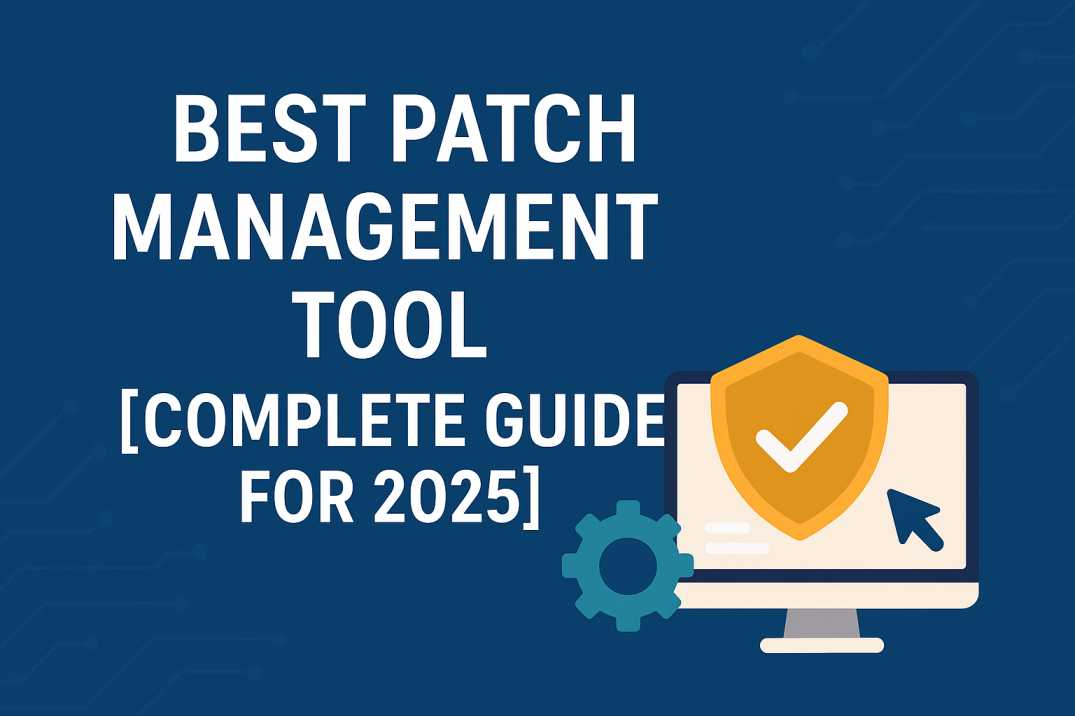

In today’s digital landscape, software vulnerabilities are a leading source of security breaches. Cyberattacks, ransomware, and data leaks often exploit unpatched systems, making timely updates essential for IT security. Patch management software automates the process of identifying, testing, and deploying updates, ensuring systems remain secure, stable, and compliant.
With a growing variety of solutions available, understanding the features, limitations, and practical applications of top tools is critical for IT teams in 2025. This guide explains the importance of patch management, outlines best practices, and reviews the best patch management tools organizations rely on today.
Patch management is more than simply installing updates—it’s about reducing risk, maintaining compliance, and improving operational efficiency. Key benefits include:
Enhanced Security: Patches fix vulnerabilities that could be exploited by attackers.
System Stability: Updates often resolve bugs and improve software performance.
Regulatory Compliance: Organizations in regulated industries can meet audit requirements by documenting updates.
Operational Efficiency: Automation reduces repetitive manual work for IT teams.
Remote Workforce Support: Modern tools allow patching across devices, regardless of location.
By automating patch workflows, IT teams can focus on strategic initiatives instead of manually tracking updates across endpoints.
When evaluating software, look for these essential capabilities:
Automated Scanning and Deployment – Reduces human error and ensures consistency.
Cross-Platform Coverage – Supports Windows, macOS, Linux, and key third-party applications.
Reporting and Compliance Tools – Tracks which devices are patched and demonstrates audit readiness.
Rollback Options – Provides the ability to revert updates that cause issues.
Scheduling and Policy Management – Minimizes downtime by applying updates at appropriate times.
Here are the top five tools that IT teams are using to automate patching, maintain compliance, and streamline IT operations.
Microsoft Intune is a cloud-based endpoint management solution supporting Windows, macOS, iOS, and Android. Its patch management capabilities focus on configuring Windows Update for Business to manage quality, feature, and driver updates.
Why It’s Valuable:
Intune is effective in hybrid environments where Microsoft 365 and Azure AD integration is crucial. It provides detailed compliance dashboards and audit-ready reporting.
Key Features:
Configurable update rings for Windows updates
Cloud-based patch deployment
Compliance tracking and reporting
Considerations: Limited native support for non-Microsoft applications; requires additional tools for third-party patching.
Overview:
This cross-platform tool manages patches for Windows, macOS, Linux, and over 850 third-party applications. It provides automated deployment, testing, and comprehensive compliance reporting.
Why It’s Valuable:
ManageEngine Patch Manager Plus is cost-effective for small businesses while scalable enough for enterprise environments. Its detailed reporting helps organizations maintain compliance and security standards.
Key Features:
Automated deployment and testing
Cross-platform support
Flexible scheduling and in-depth compliance reports
Considerations: Some advanced features require premium plans; interface may feel outdated to some users.
Overview:
Automox is a cloud-native, policy-driven platform for Windows, macOS, and Linux. It is particularly strong for remote device management without requiring VPNs.
Why It’s Valuable:
Automox allows IT teams to create custom patching policies and gain real-time visibility into endpoint security. Its automation reduces manual workload and enhances security posture.
Key Features:
Automated OS and application patching
Custom policies and workflow integration
Real-time compliance dashboards
Considerations: Advanced analytics are limited; pricing may increase for larger networks.
Overview:
NinjaOne is a cloud-first platform that automates OS and third-party application patching while providing centralized visibility of patch compliance.
Why It’s Valuable:
Its intuitive interface and focus on automation allow IT teams to efficiently manage patches across small to enterprise-scale environments.
Key Features:
Automated OS and third-party patching
Real-time compliance reporting
Cloud-native deployment (no VPN required)
Considerations: More complex patch rules may require higher-tier plans.
Overview:
Workelevate is a patch automation platform designed for on-site, hybrid, and remote environments, with a strong focus on Windows operating system patch management. It integrates with leading IT service management (ITSM) platforms and emphasizes compliance with industry standards.
Why It’s Valuable:
Workelevate is ideal for large, distributed workforces that require structured patch management with real-time vulnerability detection and audit-ready reporting.
Key Features:
Automated patch deployment and scheduling for Windows
Integration with ITSM platforms like ServiceNow and Jira
Real-time vulnerability detection and remediation
Centralized compliance tracking and reporting
Considerations: Limited to Windows.
Maintain a Software Inventory: Track all devices, operating systems, and applications.
Prioritize Critical Updates: Address high-risk vulnerabilities first.
Test Patches in Staging: Avoid disruption by testing updates on a small set of devices before full deployment.
Automate Processes: Reduce manual effort and ensure consistent patching.
Document Everything: Keep detailed logs for audits and troubleshooting.
Review Policies Regularly: Update patching strategies as new threats emerge.
Patch management is essential for maintaining secure, stable, and compliant IT environments. Automated patch management software not only reduces the risk of security breaches but also streamlines operations and improves visibility across devices.
By combining the right tools with consistent best practices, organizations can protect their systems while minimizing operational disruption.
Related Read: Best Patch Management Software for 2025